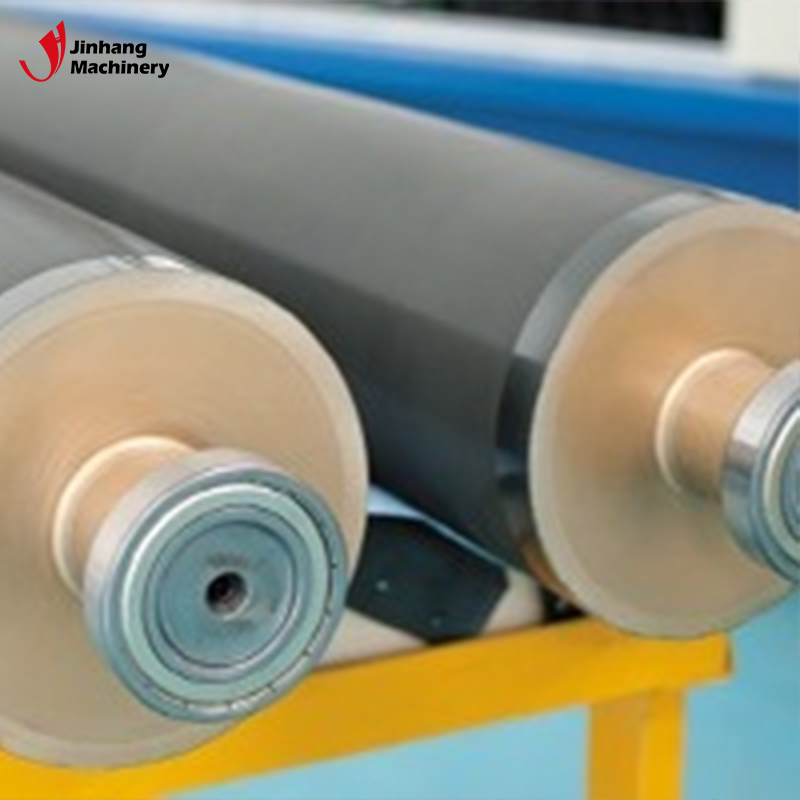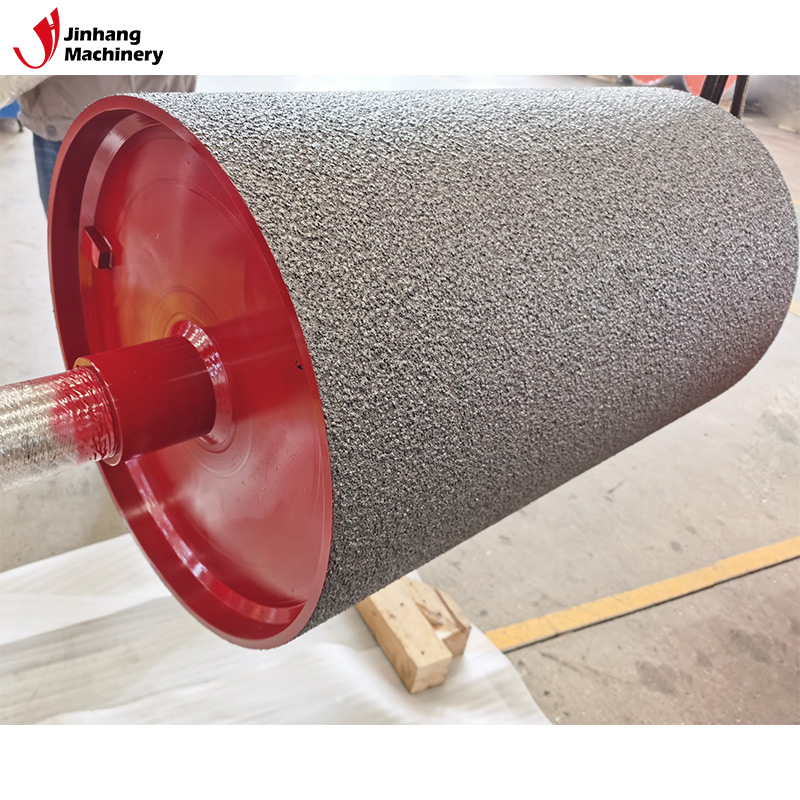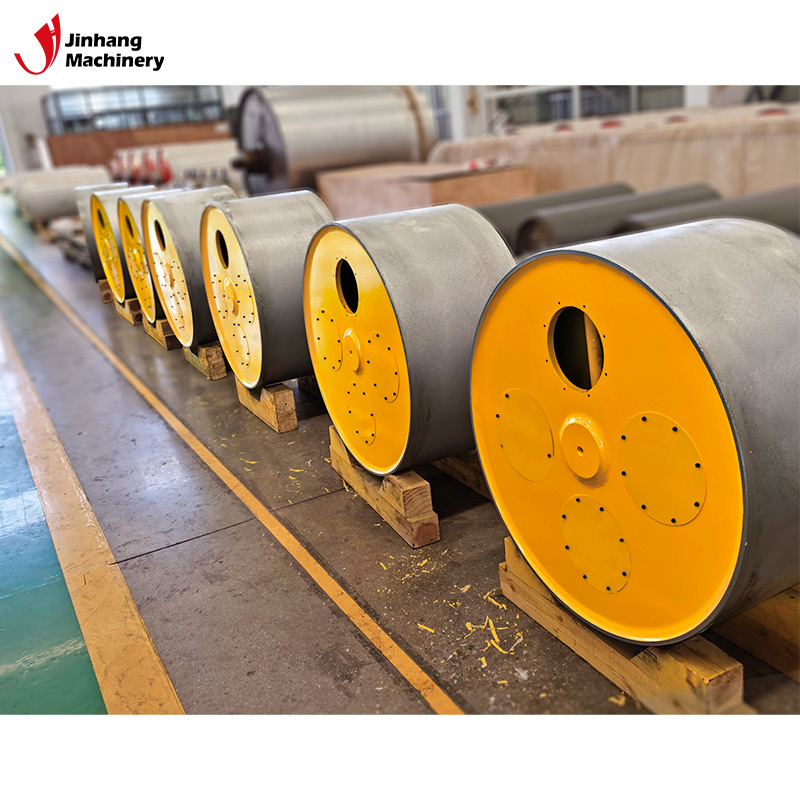What is the working principle of ceramic anilox roller?
Ceramic anilox roller is a high-precision transfer tool widely used in industrial production, mainly used in coating, printing, packaging, plastics, paper and other industries. As an important part of industrial equipment, ceramic anilox roller achieves uniform and efficient liquid transfer and coating functions through its unique textured surface and ceramic coating. So, what is the working principle of ceramic anilox roller? Why can it play such an important role in various industrial applications?
This article will elaborate on its working principle from multiple angles such as the structure, working process, surface characteristics, material characteristics, technical process and its application in actual production of ceramic anilox roller.

What is the design structure of ceramic anilox roller?
The working principle of ceramic anilox roller is inseparable from its special structural design. Ceramic anilox roller consists of a roller core and a ceramic coating, and the surface is engraved with a precise textured pattern.
Roller core structure
The roller core of ceramic anilox roller is usually made of steel or alloy steel to ensure the strength and rigidity of the roller. The roller core provides support for the ceramic coating, ensuring that it does not deform under high load and high speed. Depending on the application requirements, the size and shape of the roller core can vary, and the design of parameters such as diameter and length will be adjusted according to the type of liquid being transferred, viscosity and coating accuracy.
Ceramic coating
The ceramic coating is the core of the ceramic anilox roller and is usually made of high-hardness aluminum oxide (Al₂O₃) or zirconium oxide (ZrO₂). Ceramic materials have extremely strong wear resistance and corrosion resistance, and can maintain high performance in long-term industrial use. In addition, the ceramic layer has good chemical stability and can be used in high temperature, high humidity and corrosive environments. It is not easily corroded by solvents or other chemicals.
Surface texture structure
The surface of the ceramic anilox roller is covered with fine textures, which determine the coating capacity and accuracy of the roller. The depth, density, shape and distribution of the texture are formed by laser engraving or machining. Different texture designs are suitable for liquids of different viscosities and types. Common patterns include pyramid, diamond, square, etc., which can accurately control the distribution of liquid on the surface of the substrate.

What is the working principle of ceramic anilox roller?
The working principle of ceramic anilox roller is mainly reflected in how it transfers liquid evenly to the surface of the substrate through the surface pattern structure. This process involves multiple links to ensure the uniformity, accuracy and stability of the coating.
Basic principles of liquid transfer
The surface pattern of ceramic anilox roller is the key part of its liquid transfer. The depth and shape of the pattern determine the volume of liquid that can be accommodated in the pattern. When the roller rotates, the anilox roller contacts the coating liquid and the liquid fills the grooves in the pattern. Through the rotation of the roller, the liquid in the pattern is driven and finally transferred to the surface of the substrate through pressure or capillary action.
In practical applications, ceramic anilox rollers are usually used in conjunction with pressure rollers, coating rollers or scrapers. The pressure of the pressure roller controls the contact strength between the anilox roller and the substrate, thereby adjusting the uniformity of liquid transfer. The scraper is used to control the removal of excess liquid, ensuring that only the right amount of liquid is maintained in each anilox pattern to achieve a precise coating effect.
Liquid flow during coating process
During the coating process, the liquid flows and is evenly distributed on the surface of the anilox roller. The anilox structure forms small liquid units on the surface of the roller through its geometric design. As the roller rotates, these liquid units are gradually released, and finally form a uniform coating on the surface of the substrate. The precise design of the ceramic anilox roller ensures consistency and stability during the liquid transfer process, avoiding uneven liquid distribution or accumulation.
Due to the high hardness and wear resistance of ceramic materials, the shape of the anilox pattern can remain unchanged for a long time even in high-frequency use. This ensures that the ceramic anilox roller can provide stable coating effects during long-term operation and reduces the loss of accuracy due to wear.
Relationship between liquid viscosity and transfer efficiency
Liquid viscosity is one of the key factors affecting the working efficiency of ceramic anilox roller. Liquids of different viscosities have different filling and transfer speeds in the anilox pattern. For low-viscosity liquids, the liquid in the mesh is easily squeezed out and evenly distributed on the surface of the substrate; for high-viscosity liquids, deeper meshes and greater pressure are required to ensure the transfer of the liquid.
The design of the ceramic anilox roller can be adjusted according to the viscosity and characteristics of the liquid. For example, a deeper mesh is suitable for handling high-viscosity liquids, while a shallower and finer mesh is suitable for coating low-viscosity liquids. By adjusting the depth and shape of the mesh, the ceramic anilox roller can adapt to a variety of liquids to ensure the best transfer effect.
Surface characteristics of ceramic anilox roller and liquid transfer effect
The working principle of ceramic anilox roller depends not only on the mesh design, but also on the surface characteristics of ceramic materials. The unique physical and chemical properties of ceramic materials make it perform well in the liquid transfer process.
High hardness and wear resistance
The hardness of ceramic materials is extremely high, usually reaching HRC 70 or even higher. This means that the ceramic anilox roller can maintain its surface flatness and mesh accuracy during high-intensity and high-frequency use. The high hardness of the material makes the ceramic anilox roller less susceptible to external environmental influences, such as scratches and impacts, thus ensuring its long-term stable operation.
Excellent corrosion resistance
Ceramic materials have extremely strong chemical stability and can resist corrosion from most acids, alkalis and solvents. When handling chemicals or corrosive liquids, the ceramic anilox roller performs well and will not be corroded by the liquid. This feature makes the ceramic anilox roller particularly suitable for processes that require high chemical resistance, such as the process of handling strong solvents in printing and coating processes.
Good lubrication and surface smoothness
The surface of the ceramic anilox roller is very smooth and has good lubrication. During the liquid transfer process, this smooth surface can effectively reduce the resistance of the liquid on the roller surface, ensuring that the liquid can be evenly distributed in the mesh and smoothly transferred to the substrate surface. The better the lubricity, the less loss and waste in the liquid transfer process, thereby improving the coating efficiency and quality.

Application scenario analysis of ceramic anilox roller
Ceramic anilox roller has been widely used in many industries due to its unique working principle and excellent performance. Its main application areas include printing, packaging, plastics, textiles, coating and paper production.
Printing industry
In the printing industry, ceramic anilox rollers are used for ink transfer and coating. The fine mesh of the ceramic anilox roller can accurately control the distribution of ink, ensuring the clarity of the printed pattern and the uniformity of color. Especially in high-demand color printing, the high precision of the ceramic anilox roller has significantly improved the printing quality.
Coating industry
The coating process is widely used in industries such as packaging, film, and plastics. The ceramic anilox roller ensures that the coating or adhesive is evenly distributed on the surface of the substrate through its precise mesh design. When handling high-viscosity materials or chemicals, the wear resistance and corrosion resistance of the ceramic anilox roller play an important role, ensuring the stability of the coating process.
Custom Rolls Tailored to Your Requirements – JH Machinery
At JH Machinery, we specialize in providing customized rolls designed to meet your specific industrial needs. Whether you need rubber rolls, heating rolls, or ceramic-patterned rolls, we deliver high-quality products that improve machine performance and efficiency. As a leading roll manufacturer in China, we offer competitive pricing and bulk purchasing options. Our rolls are used in industries such as metallurgy, automotive, and packaging. Reach out to our sales team today for a quote or to discuss your requirements. Get the best deals and discounts for wholesale orders!
